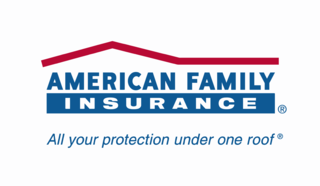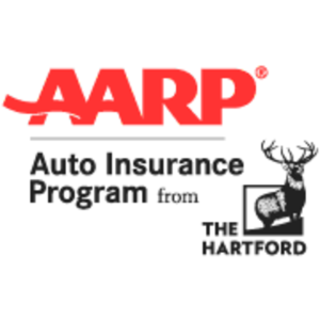6 Best Car Insurance Companies in Washington State in 2025
This article offers the information you need about car insurance in Washington. It identifies the best choices among the insurers who write policies in the Evergreen State, as well as detailing the car insurance you’re required to carry there. Also included is data about the state’s insurance costs and their drivers – such as how many drivers tend to be uninsured compared with other states, based on data from the Insurance Information Institute.
What to know about car insurance in Washington
- Washington appears to be middling compared with other states when it comes to the cost of car insurance. Some surveys of premiums across the country find it to be less expensive than the norm, while others find insuring a car in the state is comparatively expensive.
- Some regions of the Washington often receive heavy snowfalls, and snow tires or chains may be required in certain locations during the winter months.
- “Maria’s Law” – named for someone blinded by a loose piece of particle board – punishes drivers who cause injuries to others by failing to properly secure a load they’re carrying.
How we chose the best car insurance in Washington
Money’s picks for the best car insurance in Washington all offer standout coverage and are based on the selections in our national ranking of the best car insurance providers. We also consider how companies fared in the 2025 J.D. Power U.S. Auto Insurance Study, which includes a ranking of customer satisfaction in the Southwest, and complaints data from the National Association of Insurance Commissioners (NAIC). For more details on how we select picks, see the methodology below.
Top picks for the best car insurance companies in Washington
Reviews of the best car insurance companies in Washington
These insurers are top picks among those that write auto insurance policies in Washington, based on such factors as their customer satisfaction and variety of offerings. The best car insurance companies in Washington have options for good drivers to lower their rates, discounts for bundling multiple policies and flexible coverage to help drivers save money.
Listed in alphabetical order:
- Satisfaction
- About average in the Northwest (J.D. Power rating of 626/1,000; average is 629)
- Complaints
- Much better than most: NAIC (Index: 0.47; 1.0 is average)
- Financial stability
- Excellent: AM Best (Rating: A)
American Family scores about average in J.D Power's Auto Insurance Customer Satisfaction Study for the Northwest and has far fewer complaints than average lodged nationally with the National Association of Insurance Commissioners for a company of its size.
Though the insurer's rates are reportedly average at best for many drivers, the insurer may be a good bet for those with flawed driving records. Drivers with DUI convictions, poor credit or a number of traffic tickets may get lower rates than the norm with American Family, according to some analyses. The company sometimes offers below-average rates for teen drivers, too.
- Satisfaction
- Not qualified for listing in the Northwest but ranked first in customer satisfaction in New England by J.D. Power
- Complaints
- Much better than most: NAIC (Index: 0.57; 1.0 is average)
- Financial stability
- Superior: AM Best (Rating, A+)
Amica is known for top-notch service. Due to a lack of data, Amica isn't ranked for customer satisfaction in the Northwest from J.D. Power. But the insurer ranks very well in regions in which it's listed by the company. Also, Amica has fewer complaints lodged with the NAIC than would be expected for an insurer of its size. It also has a standout B rating from body shops and other repair facilities that report their experiences with insurers to the Crash Network. (The Network grades most insurers as C or lower.)
The company’s telematics program stands out for allowing customers to redeem good-driving rewards for gift cards with merchants such as Amazon and Target.
Amica’s premiums tend to be more expensive than the norm in price comparisons, though, so this is an insurer best suited to those who value top-of-the-line customer service over cost savings.
- Satisfaction
- About average in the Northwest: J.D. Power (631/1,000: average is 629)
- Complaints
- Better than most: NAIC (index: 0.75; 1.0 is average)
- Financial stability
- Superior: AM Best (Rating, A++)
"
GEICO is a decent, though not outstanding, insurer in most respects. It scored about average in customer satisfaction in the Northwest in the 2025 J.D. Power U.S. Auto Insurance Study. Its record for complaints with the NAIC is better than most insurers, though. Also, while GEICO’s premiums are generally middle-of-the-road, they’re sometimes notably less expensive than those of competitors for some drivers.
An area where GEICO stands out is in its telematics – or usage-based insurance (UBI) – policies. In its national rankings, J.D. Power ranks GEICO as among the most satisfying for telematics-based insurance.
GEICO’s UBI program, which runs on the company’s mobile app, includes the ability to upload a photo of vehicle damage and quickly receive a repair estimate via the app, streamlining the claims process.
GEICO stands out for offering an unusually wide array of discounts for which drivers can be eligible, including possible discounts to members of alumni and professional associations and clients of other businesses owned by GEICO's parent company, Berkshire Hathaway.
- Satisfaction
- Above average in the Northwest: J.D. Power (645/1,000; average is 629)
- Complaints
- Better than most: NAIC (Index 0.86; 1.0 is average)
- Financial stability
- Superior AM Best (Rating:A+)
The score for The Hartford was well above average – and second only to State Farm – in J.D. Power's most recent ranking of customer satisfaction with auto insurance in the Northwest. The company's NAIC complaint index of 0.47 is also remarkably low.
The company's premiums, though, are often higher than some other insurers on our list, such as GEICO. If you're an AARP member, you can earn a 10% discount on car insurance with The Hartford. Additionally, The Hartford offers other discounts for AARP members, such as for bundling auto and home insurance, paying in full and having certain safety features in their vehicles.
The Hartford's insurance benefits include RecoverCare. If you're injured in a car accident, you can get up to $2,500 to cover day-to-day expenses like transportation, cooking, cleaning and more.
- Satisfaction
- About average in the Northwest: J.D. Power, 625/1,000, average is 629.)
- Complaints
- Better than most: NAIC (index: 0.7; 1.0 is average)
- Financial stability
- Superior: AM Best (Rating, A++)
Nationwide’s scores well above average in rankings of customer service for the Northwest by J.D. Power. The insurer is among the most satisfying in its claims handling, according to J.D. Power, and its premiums are often less expensive than those of competitors.
The company also tops J.D. Power’s ranking for satisfaction with insurance provided through telematics programs. Nationwide offers two such programs – one is focused on providing safe-driving discounts to customers with regular policies, and the other lets drivers pay for insurance coverage by the mile. Both programs stand out as among the comparatively few where you don’t risk higher premiums if the telematics monitoring finds your driving to be lacking. Neither program penalizes drivers with higher premiums if the monitoring software flags risky driving behaviors.
Additional pluses include an exceptionally generous policy for replacing new cars that are declared to be a total loss. Whereas most competitors will provide a brand-new replacement for your car only until the vehicle is two years old, Nationwide extends that perk to cars that are up to three years old.
- Satisfaction
- Well above average in the Northwest: J.D. Power (648/1,000: average is 629)
- Complaints
- Better than most: NAIC (index: 0.84; 1.0 is average)
- Financial stability
- Superior (AM Best rating, A++)
J.D. Power scores State Farm as well above average for customer satisfaction in the Northwest, and the insurer has fewer complaints than the norm lodged with NAIC.
State Farm's premiums can be less expensive than some competitors, especially when it comes to insuring teen drivers.
Indeed, State Farm stands out in other ways for insuring younger drivers. It offers teen drivers who maintain at least a 3.0 GPA a Good Student Discount of 25% until age 25, a steeper reduction than most other companies. It also offers a Student Away at School discount that only covers the student – and only charges for them – while they’re at home for breaks and holidays, a potential cost-saver for families with drivers who are at college.
A guide to car insurance in Washington
Here's the information and advice you need to ensure your car insurance coverage in Washington is adequate, both to meet the state mandates and to ensure you are well-protected.
Washington's insurance requirements
Like almost all states, Washington imposes requirements for the types and amounts of car insurance its drivers must carry. Here are the insurance minimums you need to drive legally in the state.
Bodily Injury Liability Coverage
This part of your policy protects you financially if you injure someone in an auto accident. Your responsibilities might include payments for medical expenses, pain and suffering and lost wages.
Washington requires drivers to carry minimum bodily injury liability coverage of $25,000 per person and $50,000 per accident.
Property Damage Liability Coverage
This covers you if you cause damage to someone else's property in a car accident. The coverage includes damage to other vehicles and property, such as fences or other structures.
Washington requires drivers to have at least $15,000 per accident in property damage liability.
Uninsured Motorist Bodily Injury Coverage
Washington is among the worst states for the proportion of vehicles that are uninsured, with about one in five of its drivers lacking insurance.
Unsurprisingly, then, the state mandates that car insurance sold in the state include coverage to protect you if the responsible party in a car accident lacks insurance. The required uninsured motorist bodily injury coverage is at least $25,000 per person and $50,000 per accident.
Medical Payments
This coverage can help pay for medical expenses injured drivers and passengers face after an accident, regardless of who is at fault. Medical payments coverage can cover the costs of ambulance rides, hospital stays, surgery and rehabilitation.
Washington does not require drivers to carry this coverage. However, it is available optionally, and experts recommend carrying at least $2,000 in medical payments insurance.
Buy more than the minimum coverage if you can afford it
Experts recommend you get more than the mandated minimums for car insurance, provided your budget allows it.
For liability coverage, a frequent recommendation is to carry at least $100,000 per person and $300,000 per accident for bodily injury, along with $100,000 for property damage.
Carrying less liability insurance than these expert recommendations can save you money on your premiums. However, it will also increase your financial risk from an accident that causes a lot of injuries. Such an event might create a six-figure total liability that could threaten assets such as your cars or home if you lack other means to pay for it.
You should also consider buying more medical payments coverage than the required state minimum. According to many experts, it’s best to select a medical-payments limit that’s large enough to cover your health insurance annual deductible plus any potential out-of-pocket expenses. Such a total could easily exceed the state minimum of $2,000, especially if you often have family members in the car with you.
Consider the coverage lenders may require
Auto-loan lenders want to ensure that their investment in the vehicle is protected in case it is damaged or written off as a total loss. If the vehicle is financed, the lender holds the title until the loan is paid off, so they need to be certain the vehicle is insured.
In addition to carrying at least the state minimums for liability coverage, auto loan lenders usually require you to carry the following types of insurance:
Comprehensive insurance, which covers damage to the vehicle from events other than collisions, such as theft, vandalism or natural disasters.
Collision insurance, which covers damage to the vehicle in a collision with another vehicle or object.
GAP (for Guaranteed Asset Protection) insurance, which covers any shortfall between the depreciated value of the vehicle (the usual maximum payout in the event the car is written off for insurance purposes) and the remaining balance of the loan.
If you fail to maintain the required insurance coverage, your lender may purchase insurance for you. That can be more expensive than if you bought the coverage yourself, and the lender may add the cost to your loan balance, which means you will pay interest on it.
Review your loan agreement to understand the specific insurance requirements of your lender.
How to pay less for car insurance in Washington
Some simple strategies can lower the cost of your car insurance. (In addition to taking one or more of the moves below, you can, of course, consider changing insurers to get a lower price; here’s how to switch car insurance.)
Research discounts
As in all states, companies that write car insurance policies in Washington offer a range of discounts depending on how good your driving skills are, how loyal you are to your insurer and more. Common rate reductions include those for maintaining a clean driving record, with no claims or traffic violations; taking a defensive driving course, which is now offered online; and maintaining good grades as a student.
Bundle insurance policies
A number of insurers allow you to bundle your car insurance with homeowners insurance or renters insurance and reward you with lower rates on both. The discount for bundling auto and home insurance typically ranges from about 5% to 15%, which means you might save hundreds of dollars a year.
Increase your deductible
The deductible is the portion of a claim you’re required to pay out of pocket before your insurance company pays the rest. Increasing your deductible can make your premiums more affordable. However, be careful not to raise the amount to a figure you’d be hard-pressed to pay in the event you were to have an accident.
Review your policy regularly
It’s wise to reassess your policy when it comes up for annual renewal, or whenever you make life changes that affect it, such as adding or subtracting drivers for the car or changing how far or how often you commute. These reviews ensure that you get the coverage you need, and only that.
Reduce coverage
You can reduce your annual premium by dropping collision or comprehensive coverage on vehicles that don’t have a lease or loan. However, be wary of eliminating this coverage if you can't afford to replace your car.
Consider usage-based insurance
You can potentially save in several ways by switching to usage-based insurance (UBI). With such coverage, also known as “telematics,” you agree to use an app or device to monitor driving behaviors like how fast you drive, how quickly you turn and how abruptly you brake.
You can sometimes save for a time simply for trying out telematics. After the trial, assuming your driving passes the test, you should enjoy ongoing savings on your insurance.
Shop around for cheaper rates
Shopping around and comparing quotes from at least three different insurance providers can help you get the cheapest rate without sacrificing important coverage. However, resist letting rates and discounts alone determine your choice. You should also consider companies' track records for customer service, including claims handling, and flexibility in account options, such as deductibles. You might also assess the insurers’ apps and other digital features.
Methodology
We selected our picks by researching and evaluating the following factors to arrive at the standout companies. Factors are listed in rough order of importance in our analysis:
- Customer experience: We favored companies that scored well in one or more credible satisfaction studies. Where available, we used the insurer’s customer satisfaction score for the Northwest in J.D. Power's 2025 U.S. Auto Insurance Study. Where unavailable, we used J.D. Power national data on satisfaction with claims and the shopping experience. We considered the complaints index of the National Association of Insurance Commissioners, where a lower number means the company received fewer complaints than would be expected for its size, and the CRASH Network’s report, which rates insurers based on feedback on claims handling from automotive collision repair professionals.
- Pricing profile: While the car insurance rate you will pay will vary based on your personal factors, we analyzed eight online analyses of car insurance rates to determine each company’s price profile compared with its competitors.
- Discounts: We rewarded the range and generosity of each company’s discounts, including those for bundling car coverage with other types of insurance options, remaining loyal and/or claim-free with the insurer, being a good student and taking a defensive driving course.
- Technology: Most insurers now use apps to facilitate obtaining premium quotes, filing claims and more. Companies received credit for the quality and functionality of their apps, as reflected in our reporting and J.D. Power’s assessment of the best auto insurance apps.
- Financial stability: An insurance company’s financial stability can be gauged by its AM Best financial strength rating. We chose insurers with an A rating or better.
Summary of our picks for best car insurance in Washington













